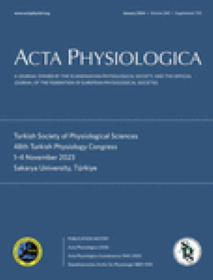Resistance exercise upregulates Irisin expression and suppresses myocardial fibrosis following myocardial infarction via activating AMPK-Sirt1 and inactivating TGFβ1-Smad2/3
Abstract
Aim
To reveal the contribution of Irisin in the beneficial effects of resistance exercise on myocardial fibrosis (MF) and cardiac function in the mice with myocardial infarction (MI).
Methods
The MI model was built by ligating the left anterior descending coronary artery in Fndc5 knockout mice (Fndc5−/−). Resistance exercise was started one week after surgery and continued for four weeks. In addition, H2O2, AICAR, recombinant human Irisin protein (rhIRISIN), and Sirt1 shRNA lentivirus (LV-Sirt1 shRNA) were used to intervene primary isolated cardiac fibroblasts (CFs). MF was observed through Masson staining, and apoptosis was assessed using TUNEL staining. MDA and T-SOD contents were detected by biochemical kits. The expression of proteins and genes was detected by Western blotting and RT-qPCR.
Results
Resistance exercise increased Fndc5 mRNA level, inhibited the activation of TGFβ1-TGFβR2-Smad2/3 pathway, activated AMPK-Sirt1 pathway, reduced the levels of oxidative stress, apoptosis, and MF in the infarcted heart, and promoted cardiac function. However, Fndc5 knockout attenuated the protective effects of resistance exercise on the MI heart. Results of the in vitro experiments showed that AICAR and rhIRISIN intervention activated the AMPK-Sirt1 pathway and inactivated the TGFβ1-Smad2/3 pathway, and promoted apoptosis in H2O2-treated CFs. Notably, these effects of rhIRISIN intervention, except for the TGFβR2 expression, were attenuated by LV-Sirt1 shRNA.
Conclusion
Resistance exercise upregulates Fndc5 expression, activates AMPK-Sirt1 pathway, inhibits the activation of TGFβ1-Smad2/3 pathway, attenuates MF, and promotes cardiac function after MI.

 求助内容:
求助内容: 应助结果提醒方式:
应助结果提醒方式:


